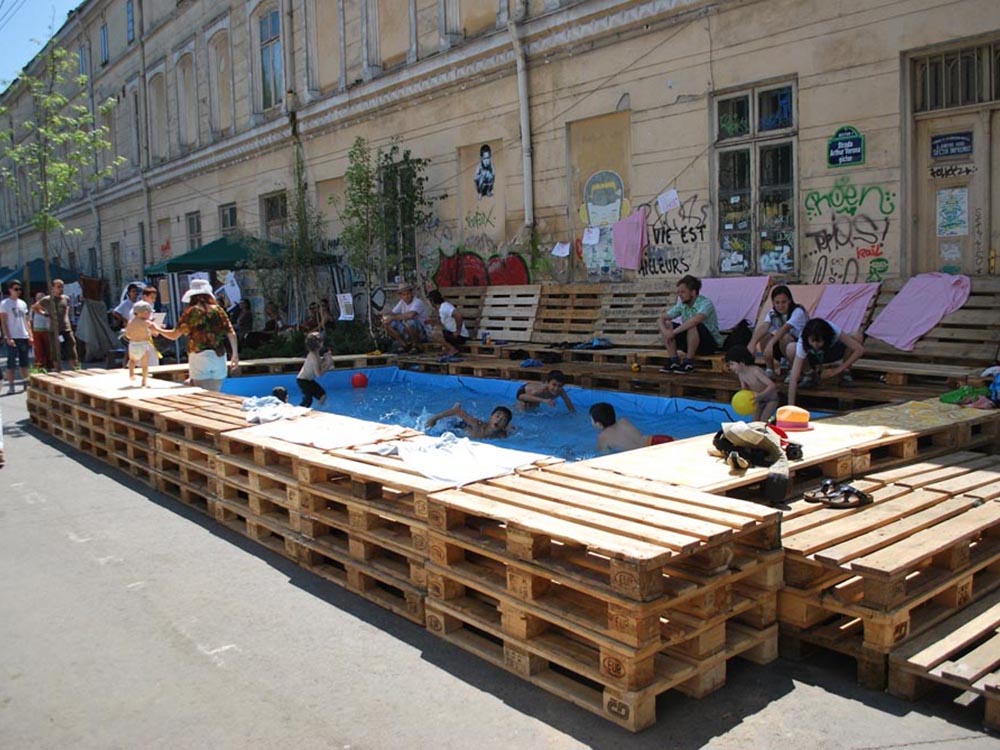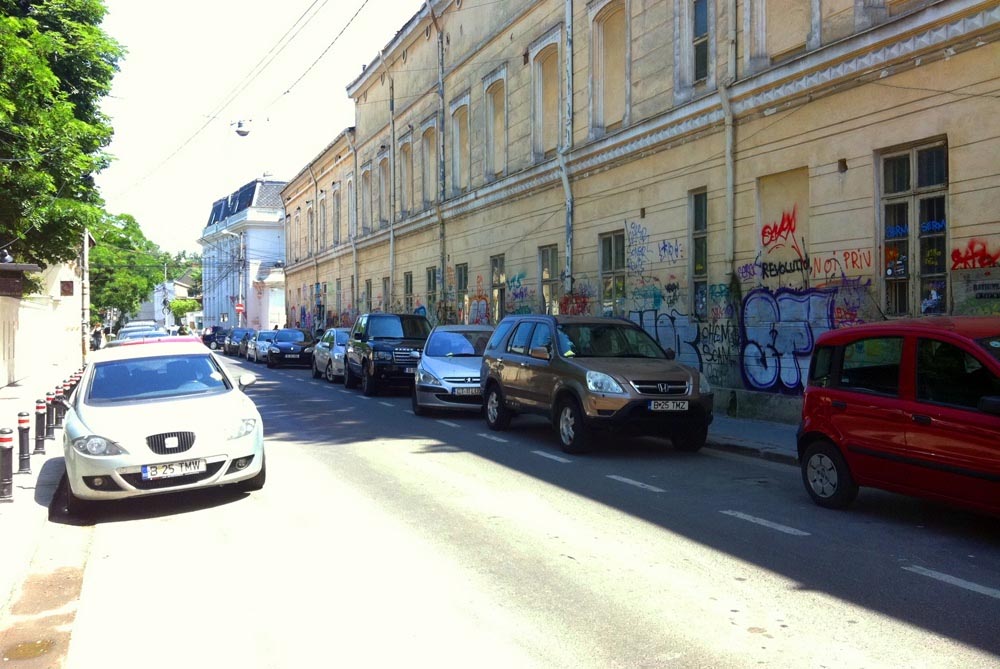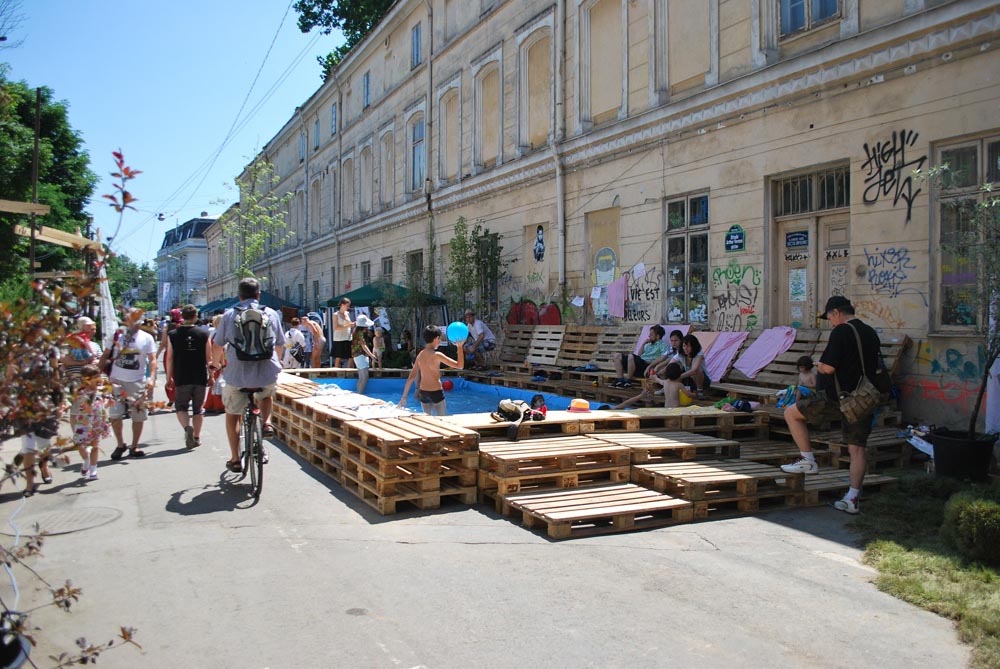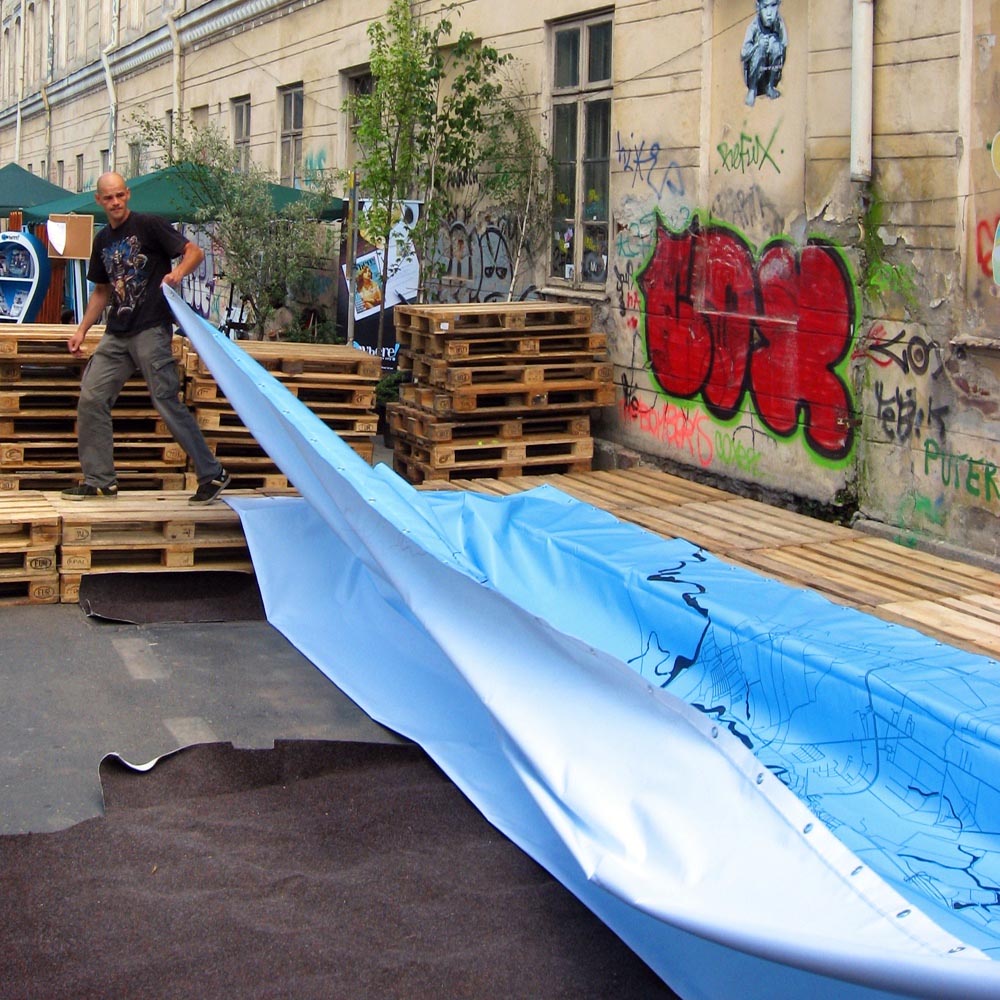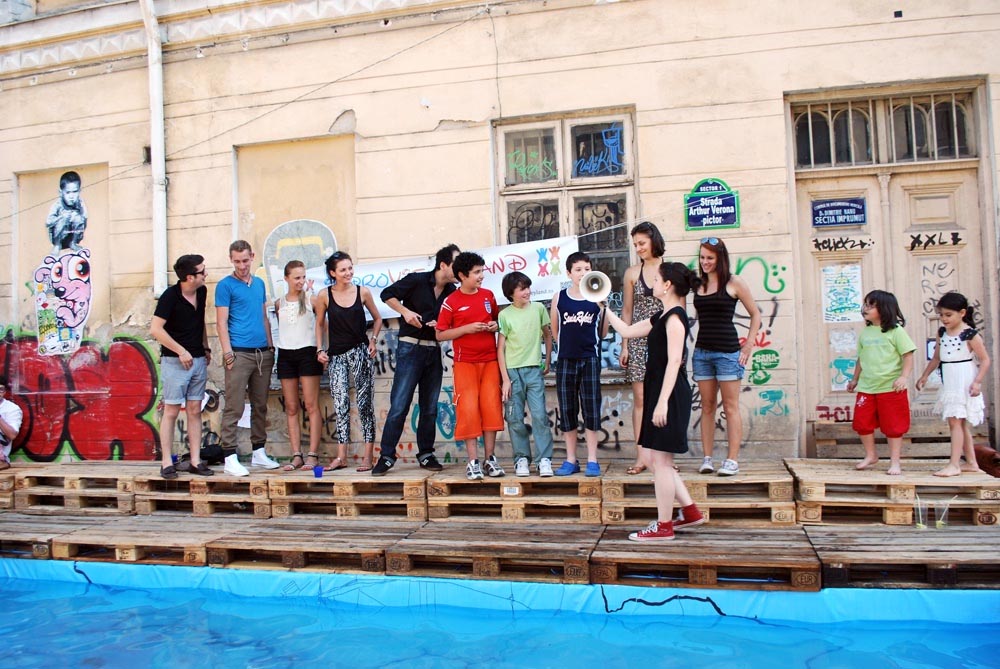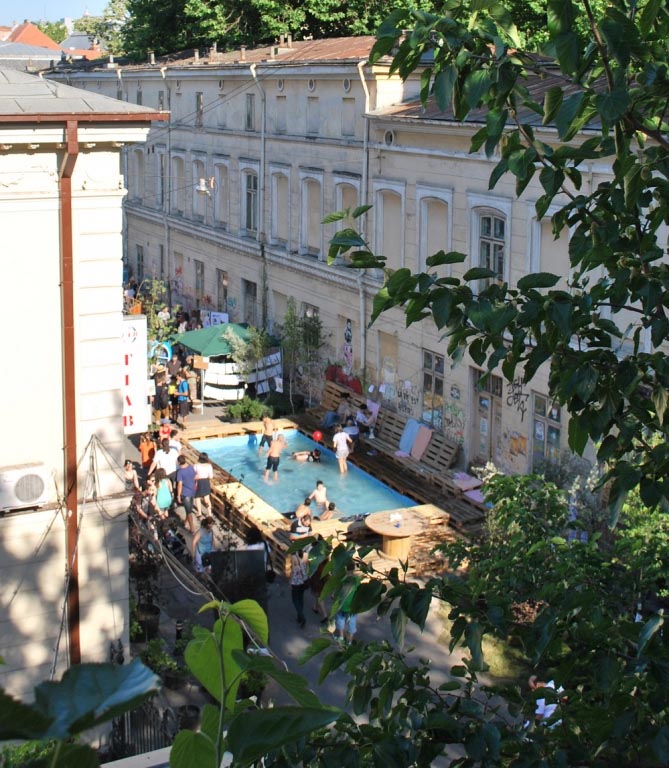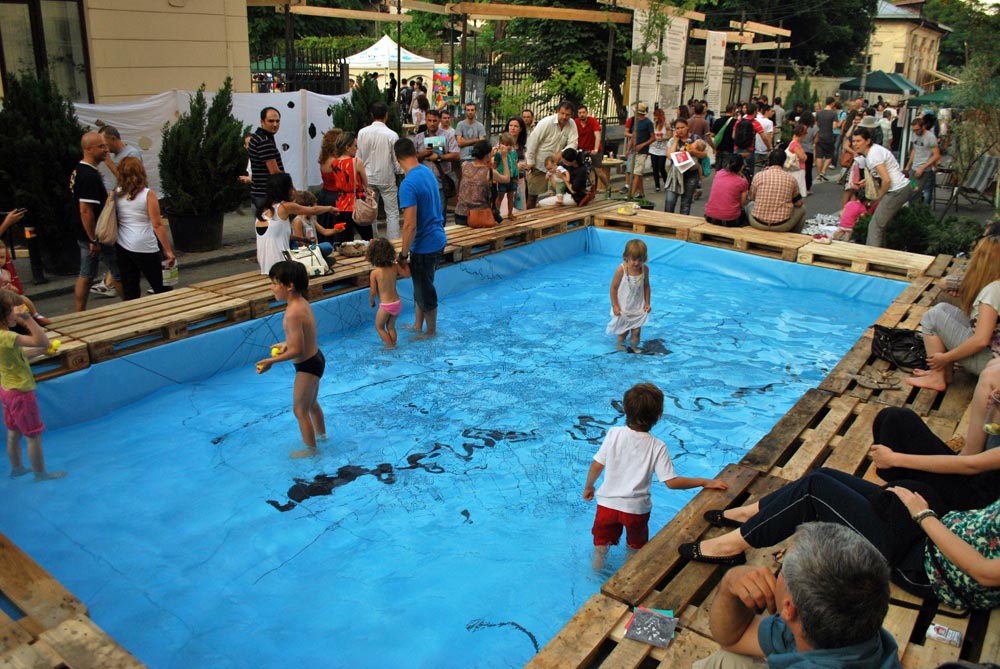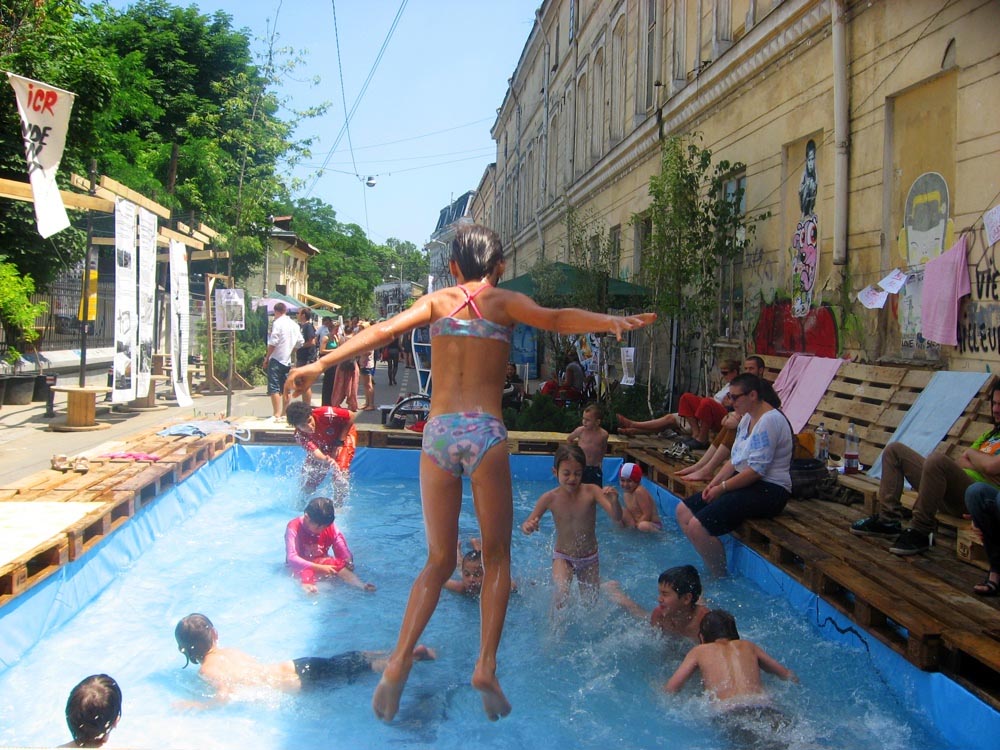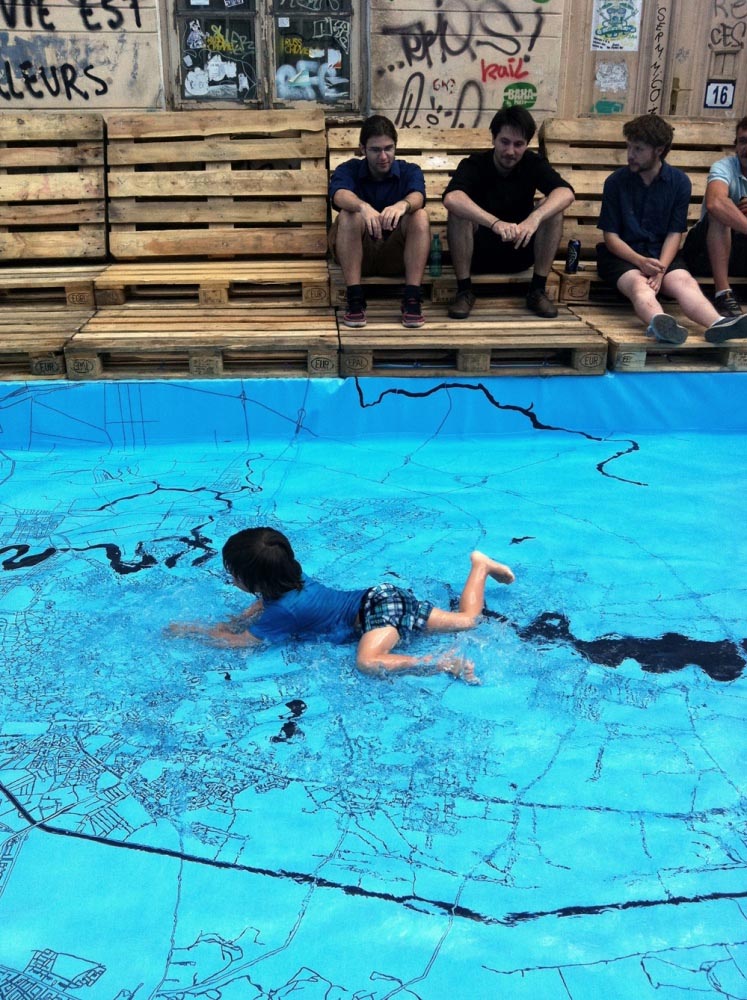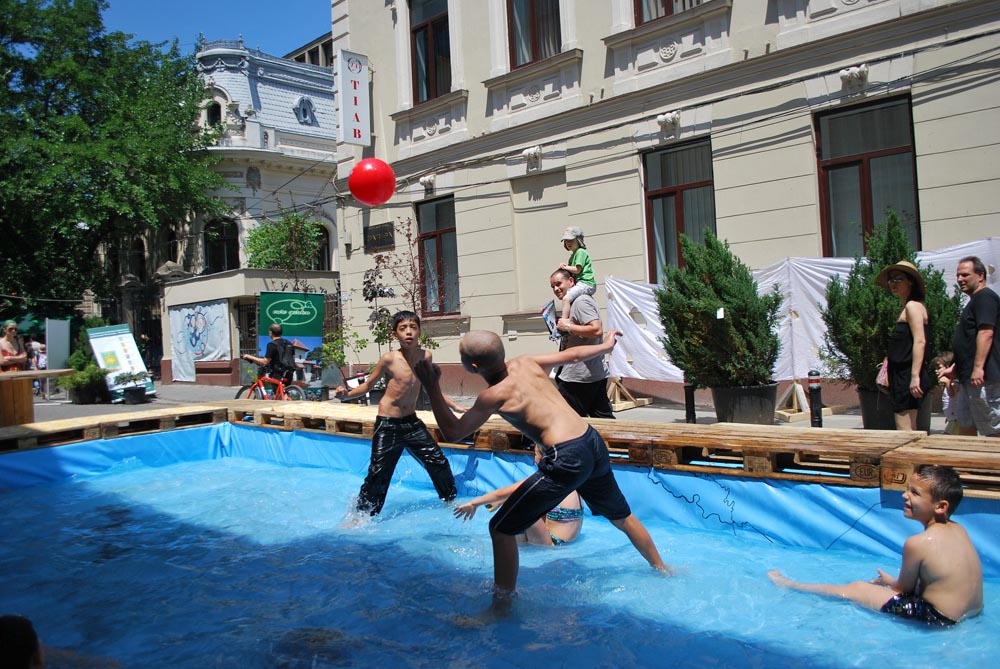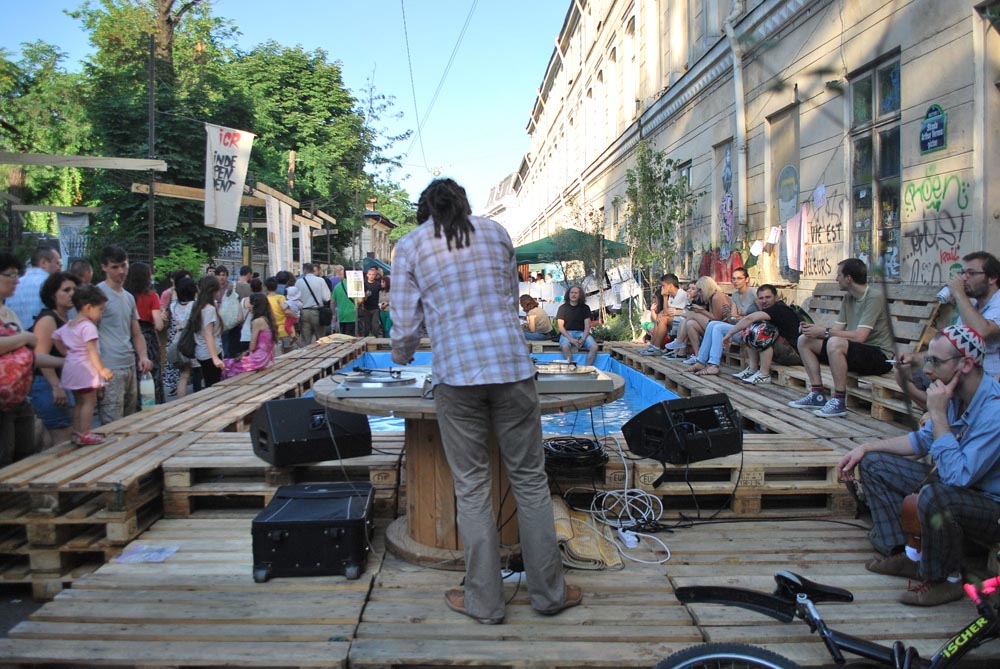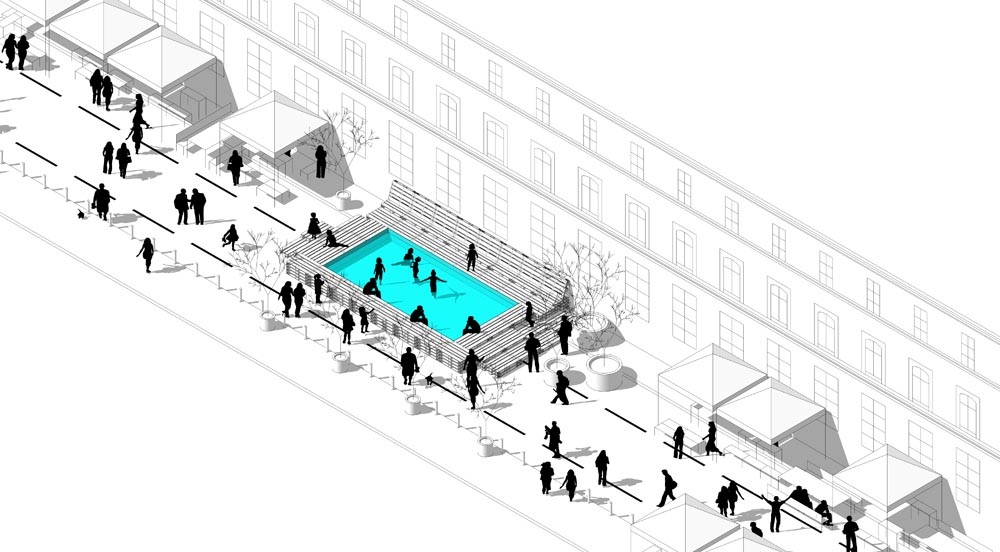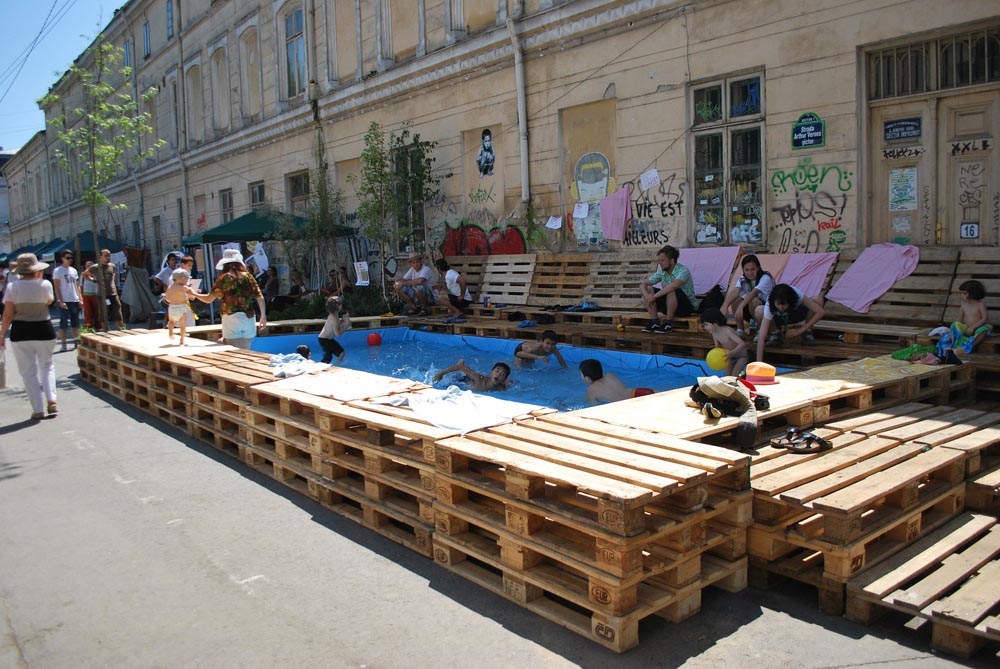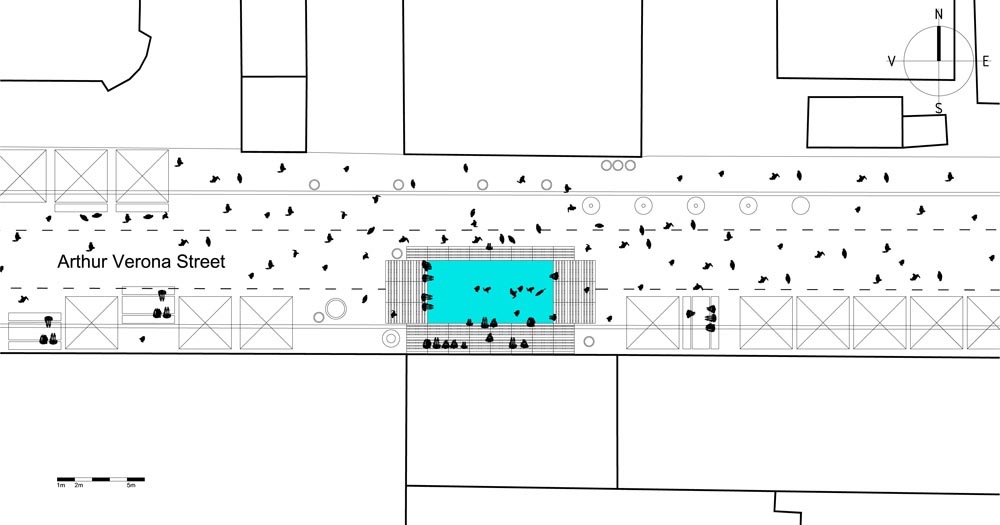Previous state
Snatch the street from the car and give it back to the pedestrian. This is the mission of the Street Delivery festival which has been held every year since 2006 in Romanian cities like Bucharest, Timișoara and Iași. Organised by the Carturesti bookshop and the Romanian Order of Architects, this non-profit-making event consists in taking over for three days every summer a space which is usually invaded by cars. To this end, it invites residents, artists, musicians, architects and students to present proposals for turning the street into a meeting place where alternative ways of sharing the urban experience can be put into practice. The initiative seeks, then, to reinforce the social, cultural and political dimensions of the street, thus giving them priority over its traffic functions.
The sixth Street Delivery festival was held in a Bucharest street named after the Romanian painter Arthur Verona. As in other zones of the old city centre cars, whether parked or moving, occupy most of the available surface with total impunity. As the matter of fact, after the 1990s, while Western European cities began to free their old centres from cars, Eastern European cities did the opposite. After the fall of the socialist regimes and their return to the market economy, rejection of anything that smacked of ‘public’ and fascination with the private car have had a considerable impact on the urban landscape.
Aim of the intervention
The proposal selected as the alternative to cars in Arthur Verona Street consisted of the installation of a temporary swimming pool. The idea met a challenge that should be the starting point for any short-lived intervention: minimising investment in material means and maximising the immaterial results obtained. The ecological cost was to be virtually zero and the economic investment less than five hundred euros. However, the educational effects were to live beyond the three days of the festival and remain engraved in the minds of local residents. It was necessary to highlight the structural role played by public space in strengthening the social fabric and democratic health of a city. Since Bucharest has very few public bathing places to offer relief in its hot summers, water was chosen as a way of attracting people. A series of parallel activities were also to contribute to activating the place.
Description
The temporary swimming pool in Arthur Verona Street was framed by a rectangular podium made from stacks of pallets, six metres wide and twelve metres long. It took over half the width of the street and was attached to a façade on the shady side. The pool itself was lined with waterproof plastic material on which was printed a map of the city. Besides holding the canvas, the pallets arranged round the edges offered surfaces for moving around or lounging next to the water. Since they were not fixed, their layout was variable so that they could be piled up to make a higher-level stage, sloped to offer a backrest or turned into steps.
Far from being limited to audiences at the programmed concerts, film screenings or workshops, the residents and visitors to the festival were very much involved in setting up the installation and its management. It took one morning for a small team to pile up the pallets and set the pool lining in place. Then it was filled with water by the bucketful. This was supplied by several more people moving in and out of nearby houses. Voluntary shifts were organised to supervise the pool and top up the water when required. After the three days of the festival, the water was drained into the sewage system, the rented pallets were returned to the company that supplied them and the swimming pool lining was folded and stowed for future use. Arthur Verona Street went back to its usual boring condition of a car park.
Assessment
Despite its fleeting existence, the swimming pool in Arthur Verona Street has left a legacy of several enduring lessons. The experience showed that freeing a street of cars can be rather more than transforming it into a shopping mall corridor. All too often, new pedestrian zones have adverse effects such as the gentrification of neighbourhoods, the closing down of small local businesses to make way for the big globalised chain stores and the proliferation of an exclusive type of consumerism that excludes people who do not have the acquisitive power to go shopping or pay for drinks in terrace bars. The temporary swimming pool also stands out among numerous ephemeral installations which, focusing on the material aspect, run up unsustainable costs without contributing any useful experience.
This installation was more than just temporary because its true value resided in the fact that it was reversible and low-cost while also achieving ambitious, enduring goals. A good example of the best expressions of “tactical urbanism”, the swimming pool was an experiment that tested a space, explored its possibilities, prodded it into action and got it to cease being what it was. With its carnival spirit, the experiment brought about a brief suspension of everyday rules so that people, rather than being mere spectators, could be actors. It achieved this through the power of attraction of water. In general, the public sphere relegates water to an increasingly decorative role, while the private sphere monopolises it as a leisure asset in fee-charging spas or water parks. By contrast, in Arthur Verona Street, water once again became a catalyst for social inclusion, citizen involvement and creative interaction. The legacy of this shared non-commercial space remains engraved in the memories of people who participated and who now know from experience that another way of living in the street is possible.
David Bravo │ Translation by Julie Wark
[Last update: 02/07/2021]


